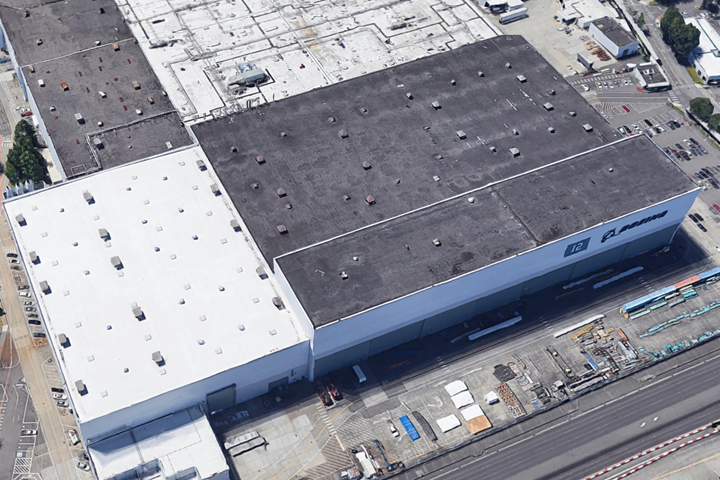Boeing shutters commercial composites R&D facility
In an effort to trim costs, commercial composites R&D at Boeing’s Advanced Developmental Composites (ADC) center in Seattle is being distributed among other Boeing composites facilities in the Puget Sound region.

Commercial composites R&D work at Boeing’s Advanced Developmental Composites (ADC) center in Seattle will be distributed to other composites facilities in the Puget Sound region.
Photo Credit: Google Maps
The Boeing Co. (Seattle, Wash., U.S.) reports that it will, over the first half of 2021, terminate commercial composites R&D work being done at its Advanced Developmental Composites (ADC) Center in Seattle, relocating people and work packages to other Boeing composites facilities in the Puget Sound region.
The ADC, located on E. Marginal Way in Seattle, adjacent to Boeing Field, was established several decades ago as the epicenter of composites M&P development for Boeing. It was at the ADC that Boeing developed technology for the B-2 bomber and then, in the early 2000s, composites for the 787.
Jessica Kowal, a Boeing spokesperson, says the relocation of work and people is being done to help Boeing reduce costs during a pandemic that has forced the company to substantially reduce aircraft production and lay off workers.
“We continue to take comprehensive action across the enterprise to adapt to our new market reality and transform our business to be leaner and more sustainable for the future,” Kowal says. “As part of this effort, the important work currently completed at our Advanced Developmental Composites Center will transition to other Boeing facilities, mostly in the Puget Sound. This is one of several steps we’re taking to streamline our operations and make more efficient use of our facility space. Boeing continues to invest in development of advanced composites for future products, and going forward this will take place in other local Boeing facilities.”
Further, Kowal notes, Boeing now has multiple composites R&D facilities throughout the Puget Sound region, including the Composites Manufacturing Center in Fredrickson and the Composites Wing Center in Everett, that can absorb the ADC work and personnel. “Boeing remains very committed to this important work,” Kowal says. “This decision is really about efficiency of production and how we bring teams together to do work.”
Some defense-related composites R&D work packages will be retained by the ADC, however, the nature of that work and the number of people involved was not disclosed by Boeing. The ADC does have two large autoclaves (unknown dimensions and make); it is unknown what the fate of those is.
Related Content
-
Infinite Composites: Type V tanks for space, hydrogen, automotive and more
After a decade of proving its linerless, weight-saving composite tanks with NASA and more than 30 aerospace companies, this CryoSphere pioneer is scaling for growth in commercial space and sustainable transportation on Earth.
-
PEEK vs. PEKK vs. PAEK and continuous compression molding
Suppliers of thermoplastics and carbon fiber chime in regarding PEEK vs. PEKK, and now PAEK, as well as in-situ consolidation — the supply chain for thermoplastic tape composites continues to evolve.
-
Manufacturing the MFFD thermoplastic composite fuselage
Demonstrator’s upper, lower shells and assembly prove materials and new processes for lighter, cheaper and more sustainable high-rate future aircraft.
















